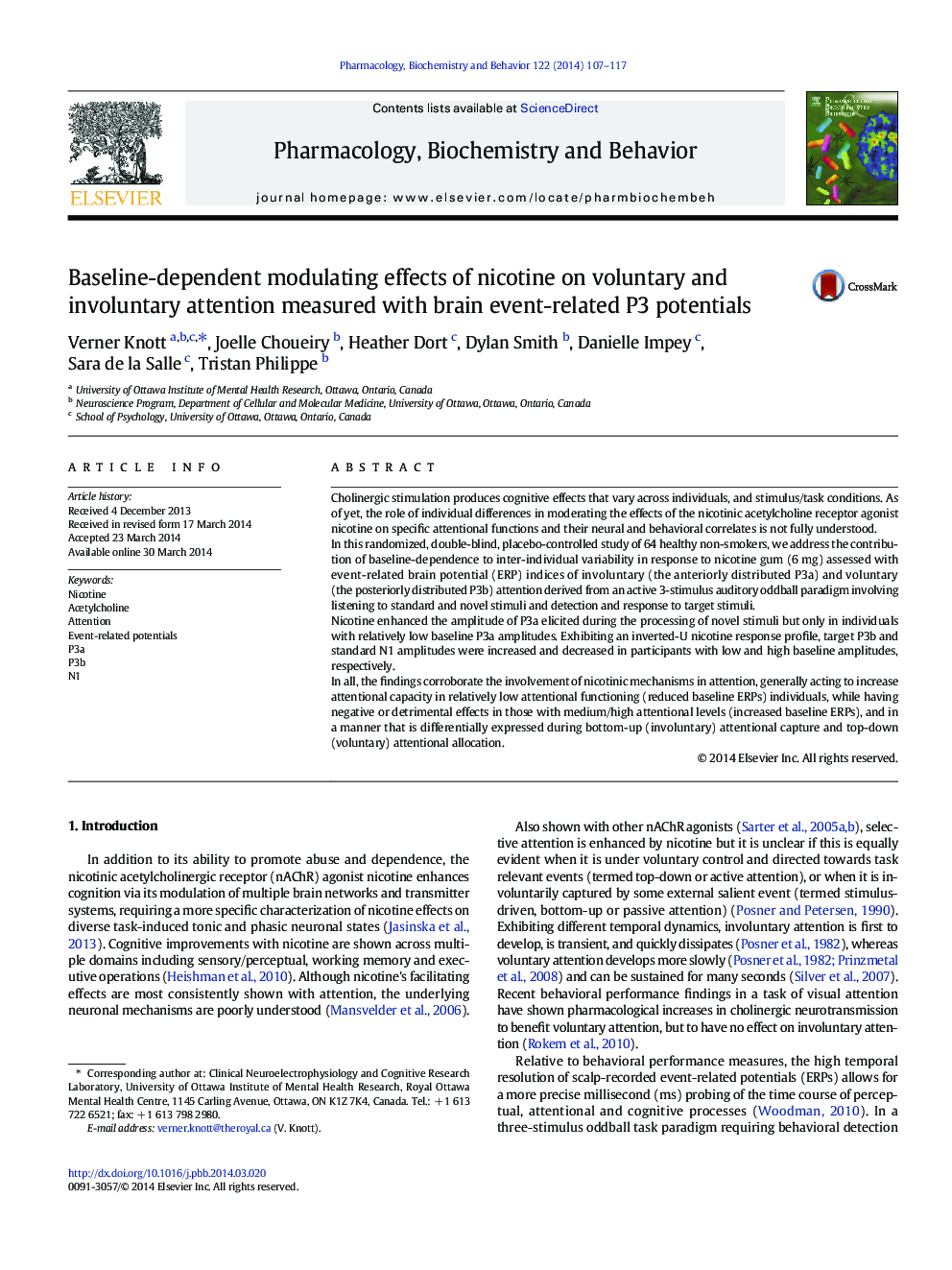| Article ID | Journal | Published Year | Pages | File Type |
|---|---|---|---|---|
| 2012876 | Pharmacology Biochemistry and Behavior | 2014 | 11 Pages |
•We examined individual differences in attentional response to nicotine using ERPs.•ERPs indexing involuntary (P3a) and voluntary (P3b) attention were assessed.•Nicotine enhanced attention in individuals with attenuated P3a and P3b potentials.•Nicotine reduced voluntary attention in those with heightened P3b potentials.•ERPs reflect inter-individual variability in attentional response to nicotine.
Cholinergic stimulation produces cognitive effects that vary across individuals, and stimulus/task conditions. As of yet, the role of individual differences in moderating the effects of the nicotinic acetylcholine receptor agonist nicotine on specific attentional functions and their neural and behavioral correlates is not fully understood.In this randomized, double-blind, placebo-controlled study of 64 healthy non-smokers, we address the contribution of baseline-dependence to inter-individual variability in response to nicotine gum (6 mg) assessed with event-related brain potential (ERP) indices of involuntary (the anteriorly distributed P3a) and voluntary (the posteriorly distributed P3b) attention derived from an active 3-stimulus auditory oddball paradigm involving listening to standard and novel stimuli and detection and response to target stimuli.Nicotine enhanced the amplitude of P3a elicited during the processing of novel stimuli but only in individuals with relatively low baseline P3a amplitudes. Exhibiting an inverted-U nicotine response profile, target P3b and standard N1 amplitudes were increased and decreased in participants with low and high baseline amplitudes, respectively.In all, the findings corroborate the involvement of nicotinic mechanisms in attention, generally acting to increase attentional capacity in relatively low attentional functioning (reduced baseline ERPs) individuals, while having negative or detrimental effects in those with medium/high attentional levels (increased baseline ERPs), and in a manner that is differentially expressed during bottom-up (involuntary) attentional capture and top-down (voluntary) attentional allocation.
